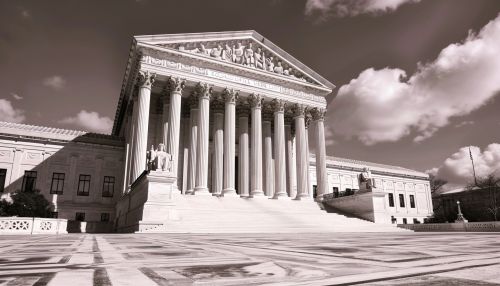Near v. Minnesota
Background
The case of Near v. Minnesota, 283 U.S. 697 (1931), is a landmark decision by the United States Supreme Court that significantly shaped the landscape of freedom of the press in the United States. This case addressed the constitutionality of prior restraints on publication, which are orders that prevent material from being published. The ruling established a critical precedent regarding the First Amendment's protection against government censorship.
Legal Context
Prior to the Near decision, the concept of prior restraint was not fully developed in American jurisprudence. The First Amendment to the Constitution states, "Congress shall make no law... abridging the freedom of speech, or of the press." However, the application of this principle to state laws was not clearly defined until the incorporation of the Bill of Rights through the Fourteenth Amendment.
The case arose under the Minnesota Public Nuisance Law of 1925, which allowed judges to issue injunctions against publications deemed "malicious, scandalous, and defamatory." This law was used to suppress the publication of "The Saturday Press," a newspaper published by Jay M. Near and Howard Guilford, which accused local officials of corruption and other misconduct.
Case Details
Facts of the Case
Jay M. Near, the publisher of "The Saturday Press," was known for his sensationalist and often inflammatory style of journalism. His newspaper published articles alleging that various public officials were involved in criminal activities, including gangster involvement and bribery. In response, Minnesota officials sought an injunction under the Public Nuisance Law to prevent further publication of the newspaper.
The state court granted the injunction, effectively shutting down "The Saturday Press." Near challenged the injunction, arguing that it violated his First Amendment rights. The case eventually made its way to the United States Supreme Court.
Arguments
Near's legal team argued that the Minnesota law constituted an unconstitutional prior restraint on free speech and free press. They contended that the law allowed the government to censor publications before they were even published, which was a direct violation of the First Amendment.
The state of Minnesota, on the other hand, argued that the law was necessary to prevent the publication of malicious and defamatory material that could harm public officials and disrupt public order. They maintained that the law was a legitimate exercise of the state's police power to regulate public nuisances.
Supreme Court Decision
The Supreme Court, in a 5-4 decision, ruled in favor of Near, holding that the Minnesota law was unconstitutional. The majority opinion, written by Chief Justice Charles Evans Hughes, emphasized the fundamental importance of a free press in a democratic society. The Court held that prior restraints on publication are generally unconstitutional, except in exceptional circumstances such as wartime, obscenity, or incitement to violence.
Chief Justice Hughes wrote, "The fact that the liberty of the press may be abused by miscreant purveyors of scandal does not make any the less necessary the immunity of the press from previous restraint in dealing with official misconduct."
The Court's decision in Near v. Minnesota established the principle that government censorship of the press is presumptively unconstitutional. This ruling has had a profound impact on subsequent cases involving freedom of the press and has been cited in numerous landmark decisions.
Impact and Legacy
The Near v. Minnesota decision is considered a cornerstone of First Amendment jurisprudence. It firmly established the doctrine against prior restraint, which has been a critical protection for journalists and publishers. The ruling has been invoked in various contexts to protect the press from government censorship and to ensure the free flow of information to the public.
Subsequent Cases
The principles established in Near v. Minnesota have been applied in several important Supreme Court cases, including New York Times Co. v. United States (1971), also known as the "Pentagon Papers" case. In this case, the Court reaffirmed the prohibition against prior restraint, allowing the New York Times and the Washington Post to publish classified documents related to the Vietnam War.
Another significant case influenced by Near is Nebraska Press Association v. Stuart (1976), where the Court struck down a gag order that restricted the press from reporting on a criminal trial. The Court held that such orders constituted an unconstitutional prior restraint on the press.
Criticisms and Controversies
While the Near decision is widely celebrated for its protection of press freedom, it has also faced criticism. Some legal scholars argue that the ruling does not adequately address the potential harms caused by defamatory or malicious publications. They contend that the decision places too much emphasis on press freedom at the expense of protecting individuals' reputations and privacy.
Others have raised concerns about the application of the prior restraint doctrine in the digital age. With the rise of the internet and social media, the dissemination of information has become more rapid and widespread. Critics argue that the traditional legal framework established by Near may not be sufficient to address the unique challenges posed by modern technology.
Conclusion
Near v. Minnesota remains a landmark case in American constitutional law, establishing a robust protection against prior restraints on publication. The decision has had a lasting impact on the legal landscape, shaping the contours of press freedom and government censorship. As the media landscape continues to evolve, the principles established in Near will undoubtedly continue to be relevant in the ongoing debate over the balance between free speech and the regulation of harmful content.


See Also
- New York Times Co. v. United States
- Nebraska Press Association v. Stuart
- Freedom of the press in the United States
